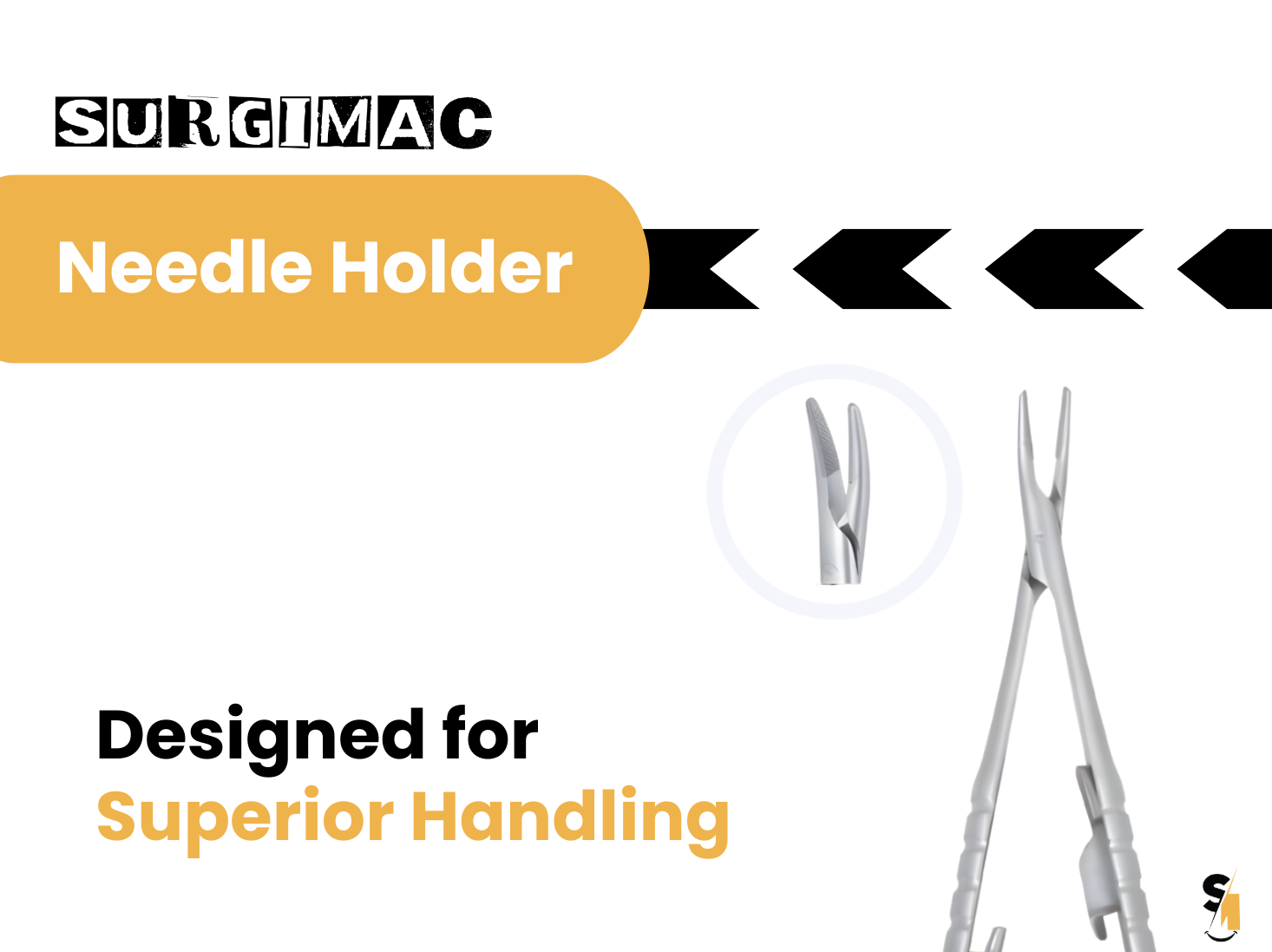Sutures, commonly referred to as stitches, are a vital tool in medical practice, playing a critical role in wound closure by holding body tissues together after an injury or surgery. At SurgiMac, we understand that choosing the right suture type is essential for medical professionals, as it directly impacts patient outcomes and recovery times. This article provides a detailed overview of the types of sutures, absorbable sutures and non-absorbable sutures, and their unique properties, uses, and benefits in various medical procedures.
Types of Sutures: Absorbable vs. Non-Absorbable
Understanding sutures is pivotal for hospital management for several reasons. First, selecting the appropriate suture type can significantly impact patient recovery times and reduce the risk of complications.
Absorbable and non-absorbable sutures each have unique properties that make them suitable for specific medical scenarios.
Absorbable sutures, for example, are designed to dissolve in the body over time, making them ideal for internal tissues that heal quickly. In contrast, non-absorbable sutures are made to remain intact and provide long-term support, which is essential for external closures and tissues that require prolonged healing.
Moreover, the choice of sutures can affect the hospital's operational efficiency. Using the correct type of suture can minimize the need for additional procedures, thereby reducing patient readmission rates and freeing up medical resources. Additionally, understanding the differences between suture materials can help in negotiating better procurement deals and managing inventory more effectively.
Different surgeons may have varying preferences based on their specialties and experiences. By staying informed about the most recent developments in suture technology , medical institutions can ensure that their medical teams are provided with the best tools for their procedures.

SurgiMac presents MYCO Medical Reli PRO Sutures provide the following key features within its entire brand portfolio:
- Low-memory racetrack packaging for easy handling
- Needles made from 300 Series stainless steel
- RediPass needle coating for smoother penetration and reduced tissue dragging
- 100% in-line manufacturing inspection
Reli PRO Absorbable Sutures
Absorbable sutures are designed to break down and be absorbed by the body over time. They are ideal for internal tissues that heal quickly, eliminating the need for suture removal.
Advantages of Absorbable and Non-Absorbable Sutures
| Type |
Examples |
Advantages |
Common Uses |
| Absorbable Sutures |
Polyglycolic Acid, Chromic Gut |
Eliminates need for removal, reduces infection risk, promotes healing |
Internal tissue closures, gastrointestinal surgeries |
| Non-Absorbable Sutures |
Nylon, Polypropylene, Silk, Polyester |
Provides long-term support, ideal for high-tension areas, can be used in combination with other sutures |
Skin closures, tendon repairs, cardiovascular surgeries |
Detailed Analysis and Application
Absorbable Suture with Needle are particularly useful for surgeries involving internal organs, as they reduce the need for a second procedure to remove the sutures. For example, Polyglycolic Acid, Polyglactin 910 and Polydioxanone Sutures are synthetic options that offer strength and gradual absorption, making them suitable for various soft tissue closures.
On the other hand, natural options like Chromic Gut and Plain Gut Sutures are often preferred in areas where a slower absorption rate is desired, such as in gastrointestinal surgeries.
Nonabsorbable Suture with Needle, such as Nylon and Polypropylene Sutures, are commonly used for skin closures, cardiovascular surgeries, and tendons. These sutures provide long-term support and are removed once the wound has sufficiently healed. Silk Sutures are frequently used in delicate surgeries, while Polyester Sutures are ideal for high-stress areas due to its braided polyester construction.
Choosing the Right Suture
The choice between absorbable and non-absorbable sutures depends on various factors, including the type of tissue, the required duration of support, and the patient's overall health. Absorbable sutures are typically used for internal tissues that heal quickly, while non-absorbable sutures are used for external closures and situations requiring long-term support. According to a study by Oesman et. al., non-absorbable sutures continue to be the preferred choice for acute Achilles tendon rupture (AATR) repair due to its strength. The choice will depend on the specific situation so one is not better than the other.
Understanding the differences between absorbable and non-absorbable sutures is critical for effective wound management. MYCO Medical offers a comprehensive range of high-quality sutures, ensuring optimal performance for various medical procedures.
Key Considerations for Choosing Sutures
Selecting the appropriate suture type can significantly impact patient recovery times and reduce the risk of complications. The choice between absorbable and non-absorbable sutures depends on several factors, including:
-
Type of Tissue: For example, absorbable sutures are preferred for internal organs, while non-absorbable sutures are better for skin closures.
-
Required Duration of Support: Non-absorbable sutures provide long-term strength, which is necessary for areas under high tension.
-
Patient Health and Healing Capacity: Absorbable sutures are advantageous for patients with good healing capacity and in cases where suture removal could cause additional discomfort or complications.
Get Absorbable and Non-absorbable Sutures from MYCO Medical
MYCO Medical is an NMSDC-certified diversity supplier that delivers premium medical devices and disposables to health systems throughout the United States and Canada. Since 1993 we have helped countless hospitals and care centers overcome their most significant supply chain challenges and build a consistent stream of high-quality medical supplies.
Our Wound Closure Portfolio offers a wide selection of absorbable and non-absorbable sutures for use in surgery, acute care, obstetrics, dentistry, dermatology, family medicine, veterinary care, and more.
Browse from our wide selection of products, including absorbable sutures, non-absorbable sutures, needles, and more, or contact SurgiMac's sales team today and receive a free complimentary sample and quote for our most popular products.
Frequently Asked Questions
1. What is the main difference between absorbable and non-absorbable sutures?
Absorbable sutures dissolve naturally in the body, eliminating the need for removal, while non-absorbable sutures provide long-term support and must be removed after healing.
2. Which suture type is better for internal surgeries?
Absorbable sutures are generally preferred for internal surgeries since they break down naturally, reducing the need for an additional procedure to remove stitches.
3. Why are non-absorbable sutures used in high-tension areas?
Non-absorbable sutures offer superior long-term strength, making them ideal for skin closures, tendon repairs, and cardiovascular surgeries where extra support is required.
4. What factors should hospitals consider when choosing sutures?
Hospitals should consider tissue type, healing time, patient health, and cost efficiency. The right choice improves outcomes and reduces the risk of complications or readmissions.
5. How do sutures impact hospital resource management?
Using the correct type of suture minimizes the need for additional procedures, reduces complications, and optimizes inventory management, improving overall hospital efficiency.
6. Where can healthcare providers get high-quality sutures?
Healthcare providers can source premium absorbable and non-absorbable sutures from SurgiMac, ensuring reliable performance backed by MYCO Medical’s trusted manufacturing.
Read More








